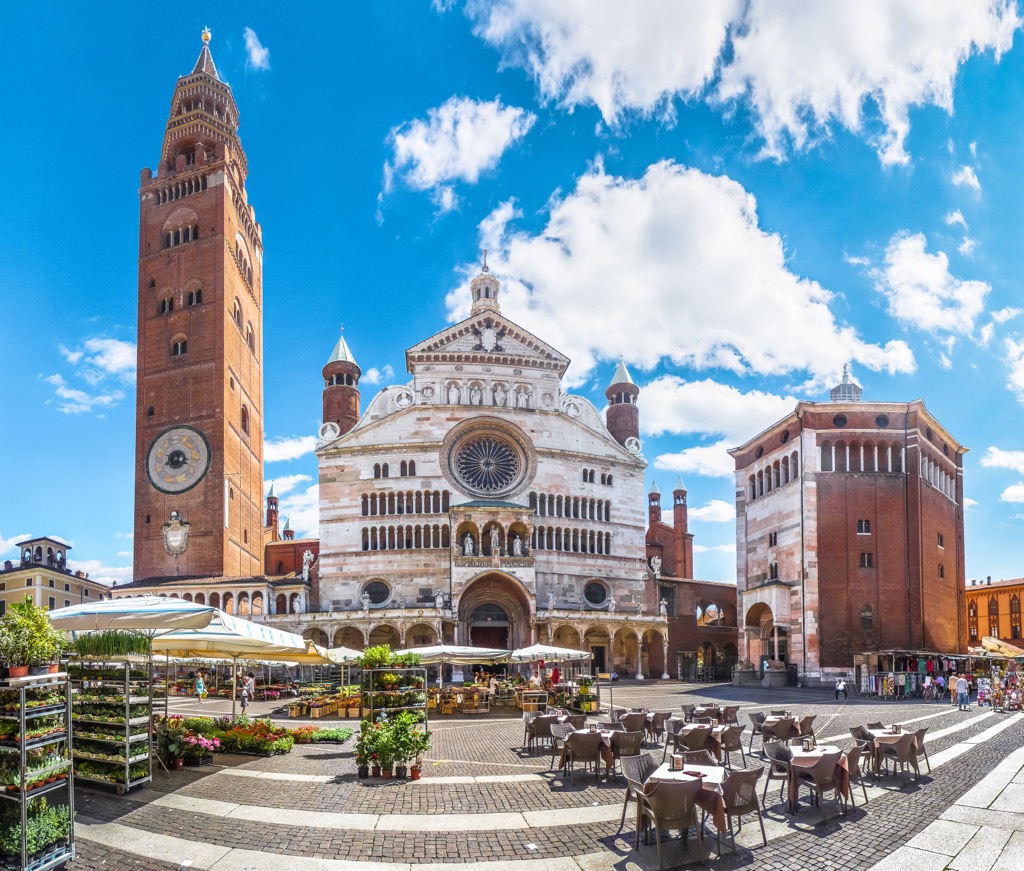Get PeakVisor App
Sign In
Search by GPS coordinates
- Latitude
- ° ' ''
- Longitude
- ° ' ''
- Units of Length

Yes
Cancel
Share ×

Scan the QR code and open PeakVisor on your phone
❤ Wishlist ×
Choose
Delete
Milan is one of Italy's two major cities on par with Rome. The main feature of Milan’s mountains is their central location between the two major mountain systems of Italy and Europe. Within the Alps and the Apennines, neither is more than one to two hours away by car and two to three hours by public transport. You can have breakfast in the city and be on top of the world before lunch. Moreover, the mountains of Milan—the iconic peaks of Grigna Settentrionale (2,410 m / 7,906 ft) and Monte Resegone (1,825 m / 5,987 ft)—are visible from the city on a clear day. There are five named mountains in Milan itself. Monte Stella (185 m / 606 ft) is the highest point. The most prominent mountain is Collina della Croce (141 m / 463 ft).
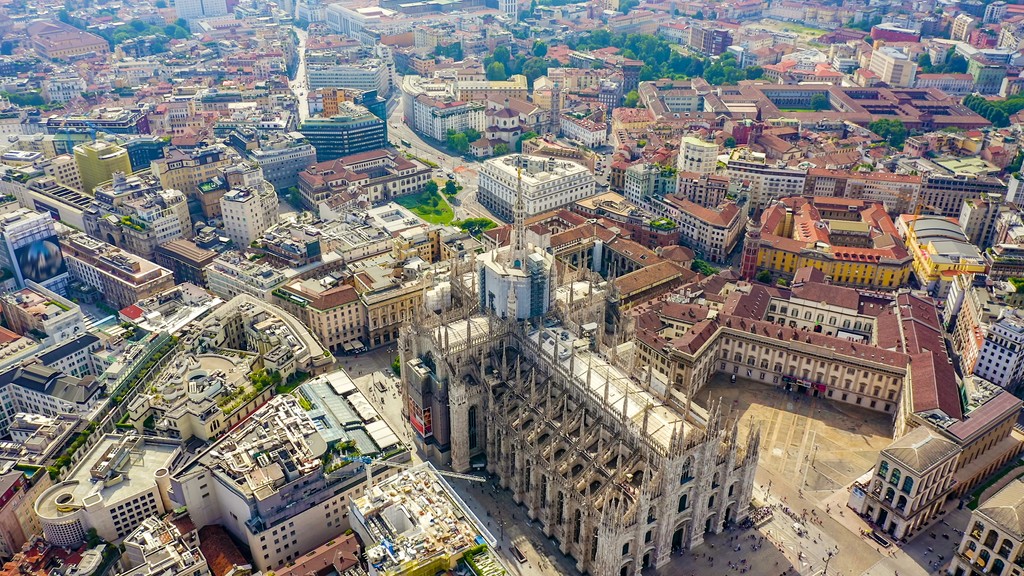
The exact origin and meaning of Milan’s name are unknown. According to one popular version, it comes from Mediolanum, the settlement of the Celtic tribe of Insubres, who lived on these territories from about 390 BC. In turn, Mediolanum may derive from 'medio' ('in the middle') and 'planus' ('plain'), referring to the region’s geographical location and landscape.
The region later became part of the Roman Empire. The Romans referred to Milan as Insubria. Ultimately, the Milan region was called Insubria during the Classical antiquity period between the 8th century BC and the 5th century AD.
For almost 400 years, between 1395 and 1796, Milan was a separate state under the Duchy of Milan.
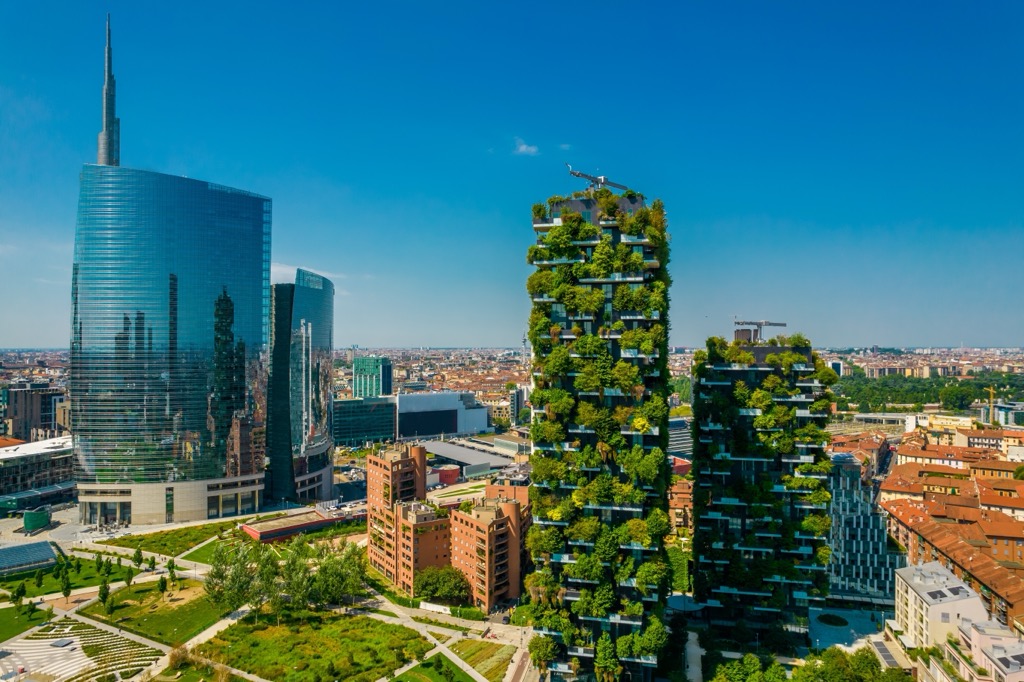
On the administrative map of Italy, Milan is a city and province of the Lombardy region in the northwest of the country. Milan is the region's central province, encompassing the cities of Varese, Como, Monza, Brianza to the north, Lecco and Bergamo to the east and northeast, Cremona to the southeast, and Lodi and Pavia to the south. Milan borders the provinces of Novara, Vercelli, and Alessandria in the neighboring region of Piedmont.
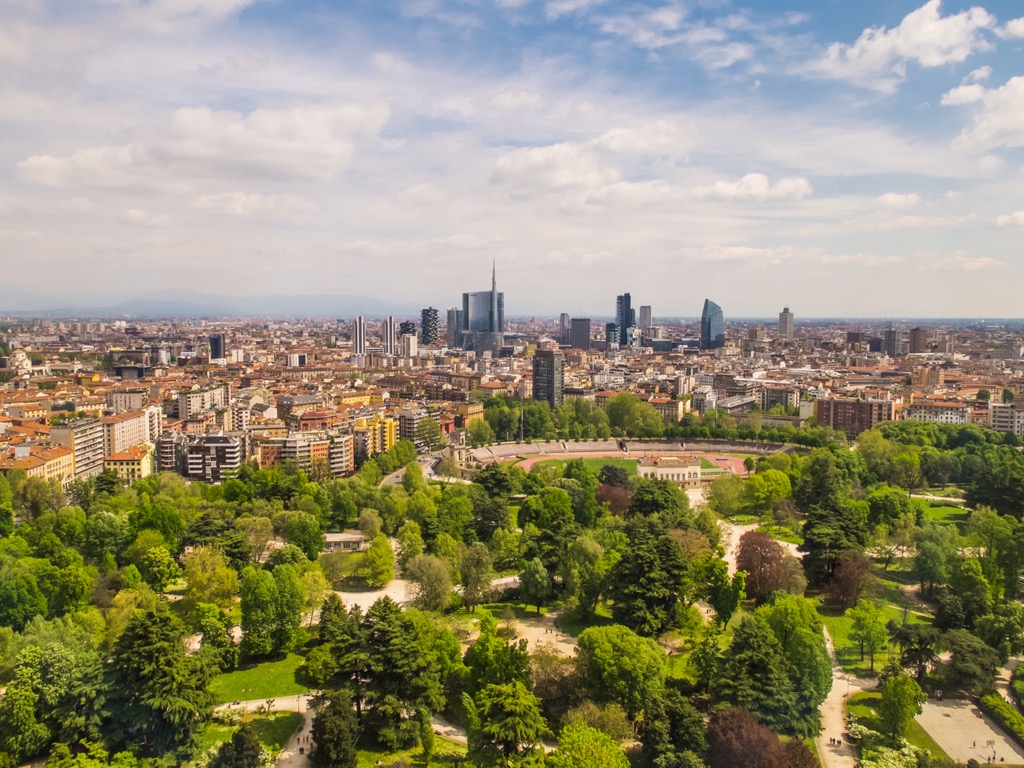
Milan is one of Italy's two major cities, along with Rome. Milan is the central economic and business city, while Rome is the historical, cultural, and political hub. Milan is also a leader in fashion and design.
Important: Milan as a metropolitan city should not be confused with the Milan Metropolitan Area or the so-called Greater Milan (Grande Milano in Italian), which includes the surrounding provinces of Monza, Como, Bergamo, and others. However, this is an administrative and geographic concept.
On a continental scale, Milan is one of Europe's four largest urban areas. The region serves as one of Western Europe’s so-called (economic) “motors” along with Auvergne-Rhône-Alpes (Lyon) in France, Baden-Württemberg (Stuttgart) in Germany, and Catalonia (Barcelona) in Spain.
Finally, on a world scale, Milan is one of 15 alpha cities, on par with Amsterdam, Chicago, Kuala Lumpur, and others. The Global Cities Index includes only 24 cities, ranked alpha, alpha+, and alpha++. New York and London are the only two cities with an alpha++ rating. These cities are considered the economic and cultural leaders of the world.
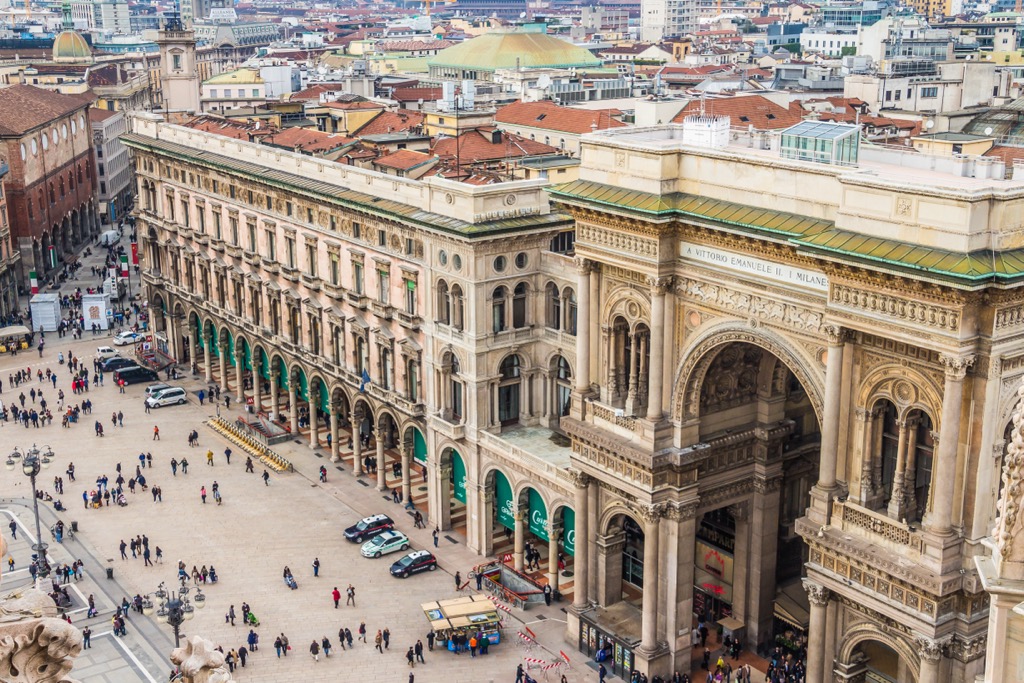
Within Italy, the easiest and fastest way to get to Milan is by car or train from Turin, Genoa, and Venice.
Milan is also connected to Rome by the Frecciarossa high-speed train. I often take this route from neighboring Bergamo — 5 hours of travel will fly by unnoticed. Most of the time, you can admire the hills of Tuscany and the foothills of the Apennines closer to Rome. If you go through Bergamo, you will also see the foothills of the Alps because the train detours through Brescia, Verona, and Bologna.
Within Europe, you can reach Milan from Nice and Lyon in France and Geneva and Bern in Switzerland. The Frecciarossa also runs between Milan and Lyon, and to go to Geneva, you can use Swiss Federal Railways or the SBB.
Milan is connected by direct flights thanks to the Milan-Malpensa and Milan Bergamo Airports. The latter is also a hub for many European low-cost airlines.
Use the Trenitalia trains to get to the mountains with public transportation. Local bus lines such as ASF in Como, Arriva in Bergamo, and ATV in Verona will take you to the more remote valleys and communities within the mountains.
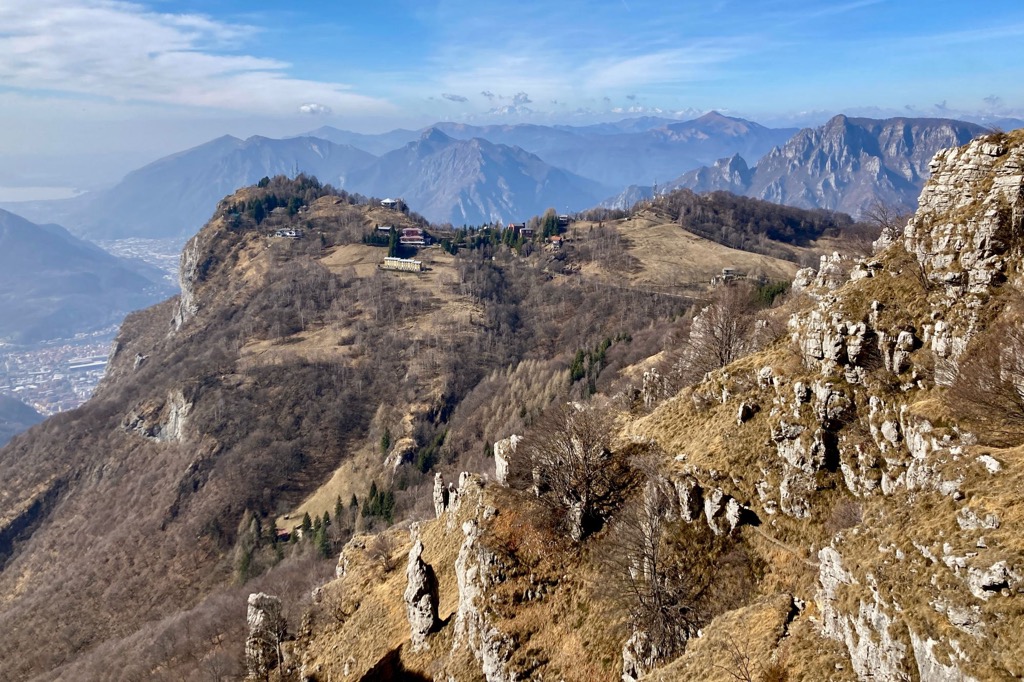
Milan is in the northwestern part of the Po River valley. Two other significant rivers pass west and east of the province’s borders: the Ticino and Adda Rivers. Thus, Milan is a predominantly flat area formed by the valleys of at least three major rivers.
Milan's Navigli (“canals” in Italian) stem from these rivers. The canals include the Naviglio Grande, Naviglio Pavese, Naviglio Martesana, Naviglio di Paderno, and Naviglio di Bereguardo. Leonardo da Vinci, who lived and worked in Milan at the invitation of the local government, designed the canals to irrigate the Po Valley's surrounding areas and ship goods to other parts of the region.
Today they are a vital outdoor attraction, with bicycle routes running along the canals. You can learn more in the National Museum of Science and Technology “Leonardo da Vinci” (Museo Nazionale della Scienza e Tecnologia “Leonardo da Vinci”). It’s Italy's largest science and technology museum, focusing on this extraordinary Italian's various inventions, designs, and art. I also recommend visiting the Milan Natural History Museum (Museo Civico di Storia Naturale di Milano) and the Brera Botanical Garden (Orto Botanico di Brera).
At the crossroads of nature and architecture, Milan is known for the Bosco Verticale ("The Vertical Forest"). This two-building residential complex in the modern Porta Nuova district is becoming greener and greener. What started as modest flower beds on residents’ balconies is now becoming a real jungle.
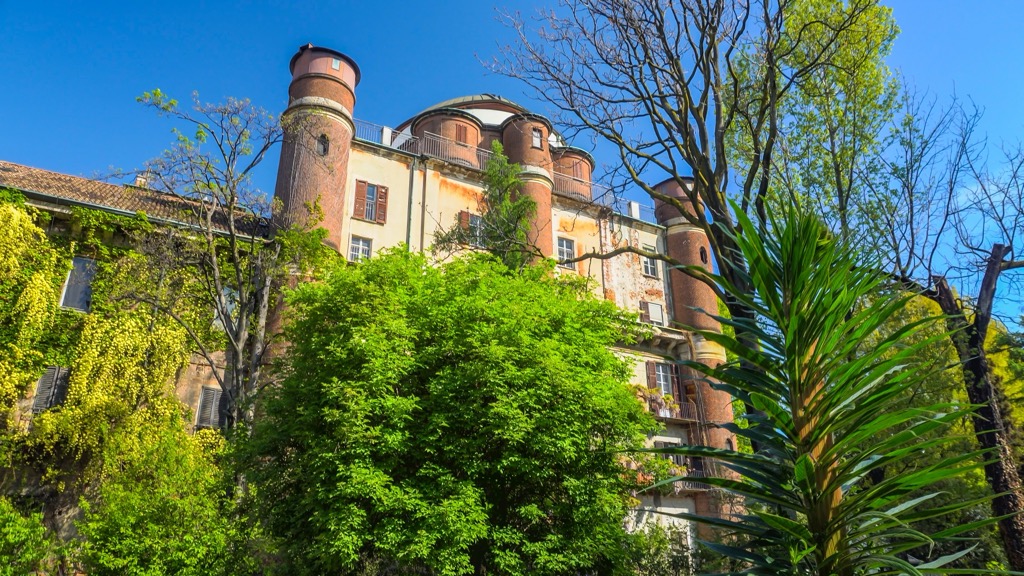
Milan has 54 green areas ranging from small squares and gardens to large urban parks. The largest parks in the city center are the neighboring Parco Aldo Aniasi and Boscoincittà (“The Forest in the City”) in its northwestern part. It is also home to Milan’s highest peak, Monte Stella.
Monte Stella (185 m / 606 ft), whose name translates as “The Star,” is the highest mountain in Milan and sits northwest of the city center. It’s an artificial hill rising 45 m (147 ft) above the city. The Milanese constructed the monument as an observation deck and park in the mid-20th century. You can see central Milan and the mountain ranges surrounding the city from the top of the hill — the Alps to the north and the Apennines to the south in the distance.
Milan has four other named peaks to the west and east of the center. I suppose you’re wondering what the name of the mountain Collinetta Hollywoodiana di Rho (160 m / 524 ft) means. It has a three-letter RHO inscription on its summit, similar to the HOLLYWOOD inscription on the eponymous Mount Hollywood (495 m / 1,624 ft) in Los Angeles, California, USA. So this is the “Hollywood Hill of Rho,” one of the suburbs within the Milan metropolitan area. Meanwhile, the Collina della Croce (141 m / 462 ft) stands prominently away from the others in the province's south.
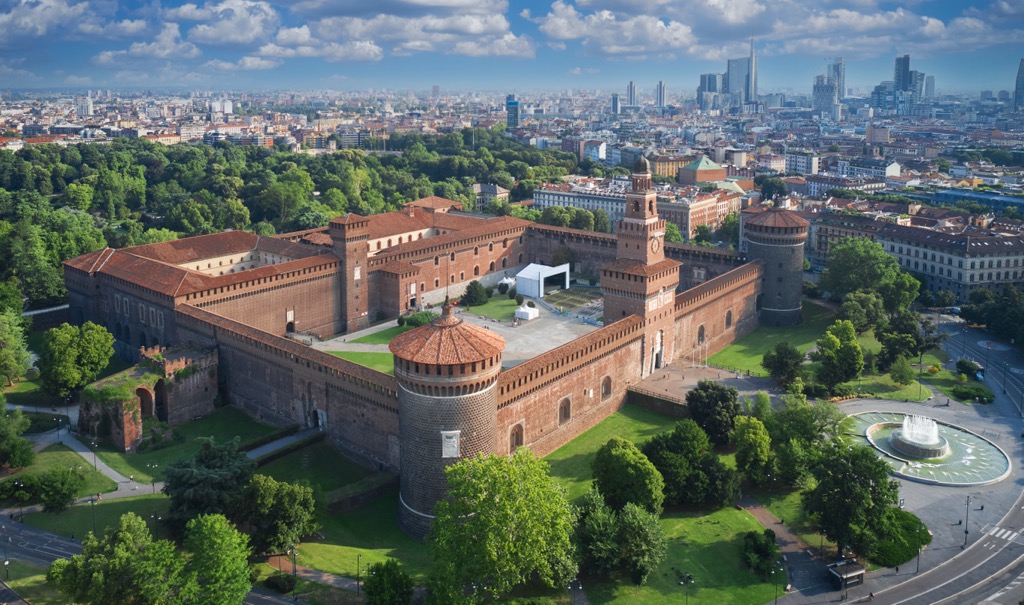
The hills of Milan can be called the 'mountains' only with a lot of imagination. Instead, they serve as excellent viewpoints for the real mountains surrounding the city. In addition to these hills, there are architectural viewpoints throughout the city.
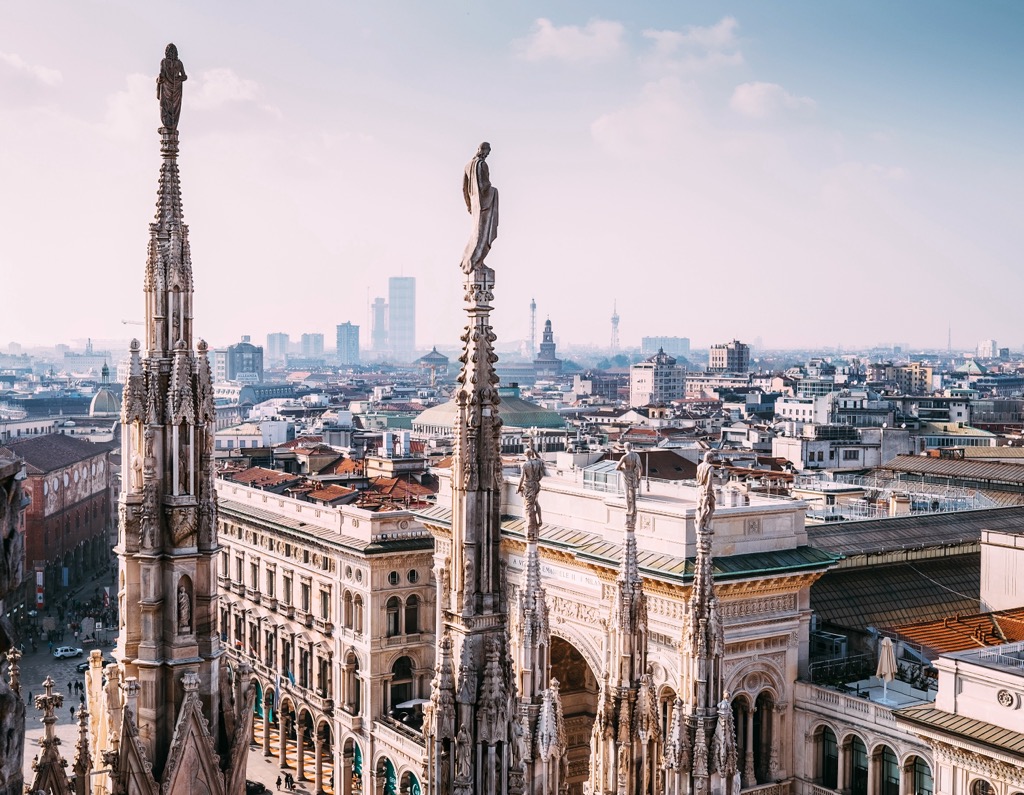
Important tip: Choose a 100% clear day to see the mountains because they may be obscured in overcast or cloudy weather. In my experience, such weather in Lombardy is uncommon and occurs more often in spring and fall. In summer, a haze can cover the sky, but the weather is often beautiful (and a bit hot). Avoid winter, when fog blankets the entire Po Valley for days.
The most visible peaks from Milan are Grigna Settentrionale (2,410 m / 7,906 ft) and Monte Resegone (1,825 m / 5,987 ft). Both peaks belong to the Bergamasque Alps and Prealps.
South of Milan are the Apennines, whose outlines are less evident due to greater distance and lower altitude. Their highest peak, Monte Maggiorasca (1,799 m / 5,902 ft), is directly between Milan and Genoa.
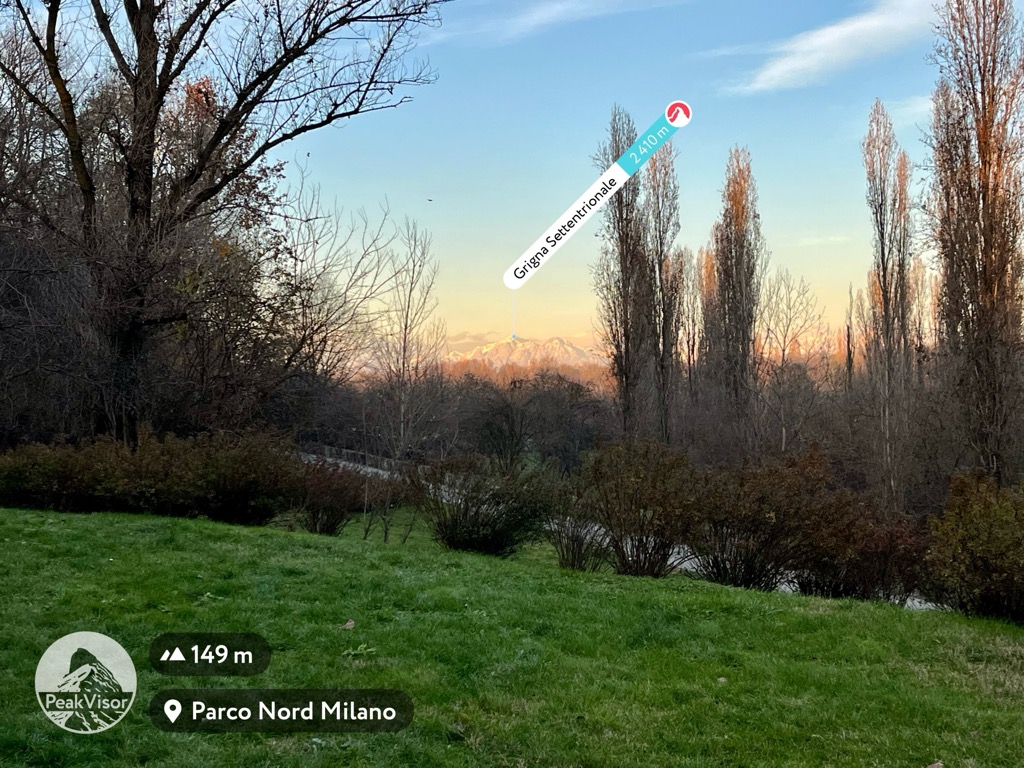
In Milan, you are at most one or two hours away from the mountains by car or two or three hours by public transportation. It is often easier to recreate in the Alps or the Apennines than to get to the province's most remote (and most extensive) city parks.
First, you can go from Milan to the Western Alps to see Mont Blanc (Monte Bianco in Italian). At 4,808 m (15,774 ft), Mont Blanc is the highest peak in the Alps and Europe outside the Caucasus Mountains in Russia. One way to enjoy this stunning massif is to go to Punta Helbronner (3,466 m / 11,371 ft), opposite Mont Blanc on the Skyway Monte Bianco. The tram station is in the village of Courmayeur in the Aosta Valley. Courmayeur is just 2.5 hours from Milan by car.
In terms of altitude, Mont Blanc is followed by Monte Rosa / Dufourspitze (4,633 m / 15,200 ft), Dom (4,546 m / 14,914 ft), Weisshorn (4,505 m / 14,780 ft), and Matterhorn (4,478 m / 14,691 ft). These peaks are also relatively close to the city center.
A series of peaks on the border between the Western Alps and the Eastern Alps offer beautiful panoramic views of the lakes north of Milan. These include Monte Zeda (2,156 m / 7,073 ft), Mottarone (1,491 m / 4,891 ft), Monte San Giorgio (1,097 m / 3,599 ft), Monte Generoso (1,701 m / 5,580 ft), Monte Crocione (1,643 m / 5,390 ft), Monte San Primo (1,681 m / 5,515 ft), Grigna Settentrionale (2,410 m / 7,906 ft), and Monte Resegone (1,875 m / 6,151 ft). Each peak offers excellent recreational activities and views from the top.
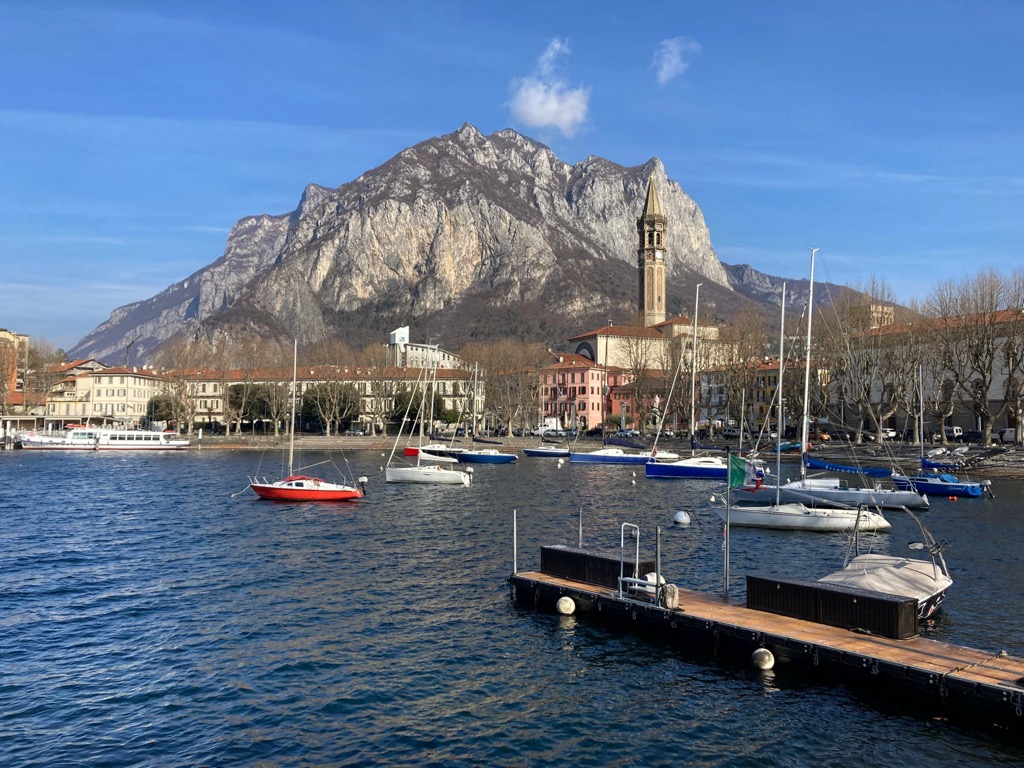
Maggiore, Lugano, and Como are the three nearest lakes to the city. A bit further east of Milan are two more large lakes, Iseo and the more famous Garda. Long hiking trails dot the shores of all the lakes, including Via Verde Varesina on Maggiore, Sentiero Lago Di Lugano on Lugano, Greenway del Lago di Como, Sentiero Viandante on Como, Via Valeriana on Iseo, and Garda Trek on Garda Lake.
Monte Resegone is the closest high mountain to Milan, offering hiking, climbing, and trail running.
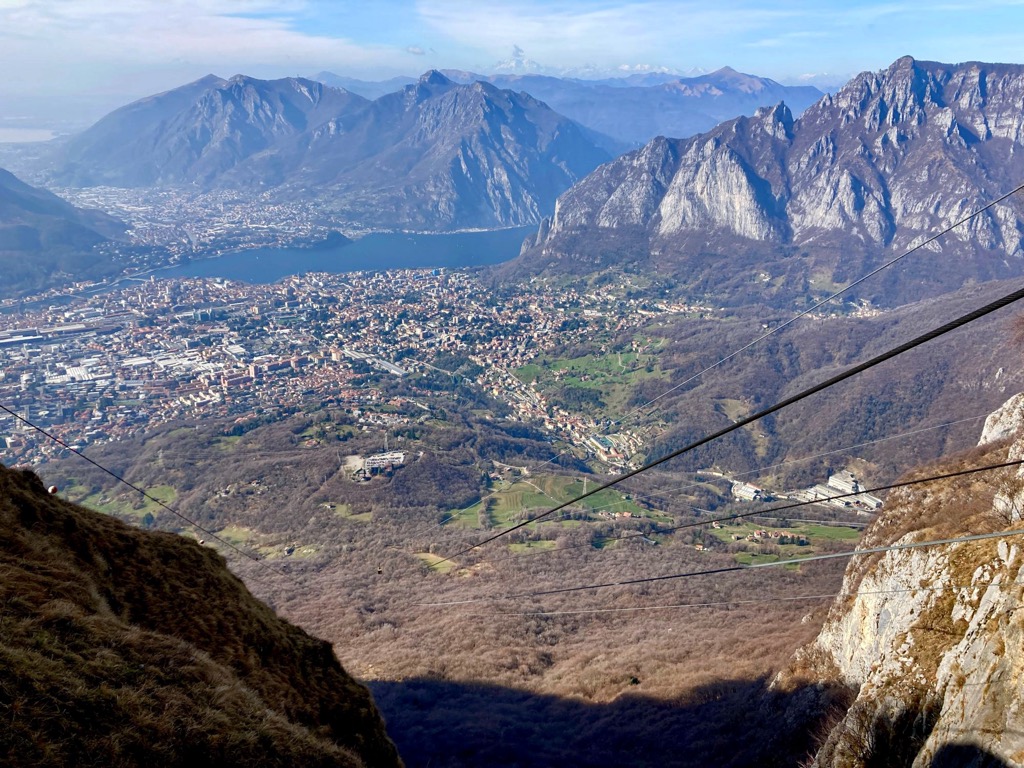
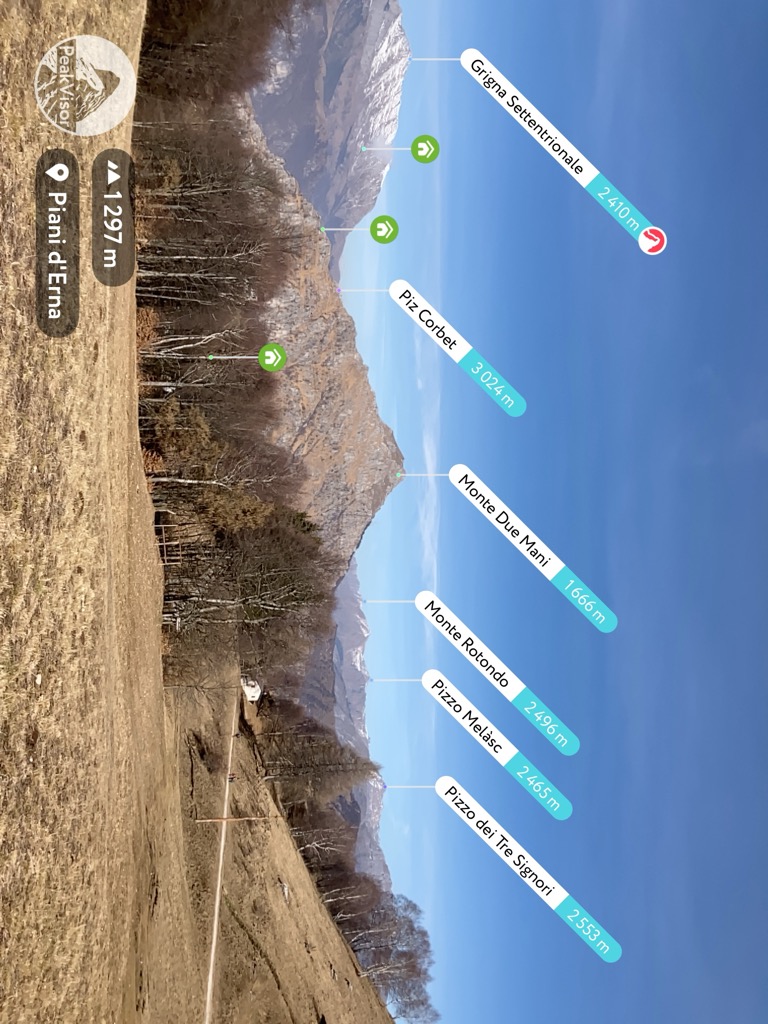
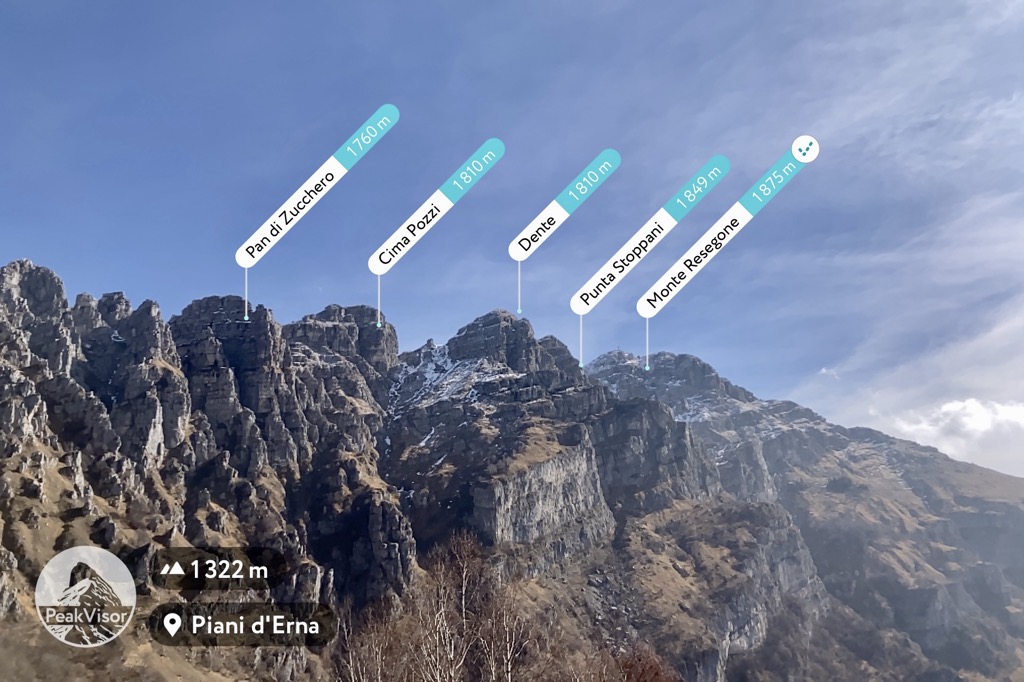
Bergamo and Brescia are the closest and most classic options for a day hike from central Milan. Both towns have peaks around 1,000 m (3,280 ft), such as Canto Alto (1,146 m / 3,759 ft) and Dosso Falamorbia (1,012 m / 3,320 ft).
Monte Misma (1,161 m / 3,809 ft) dominates Bergamo from the east. Its summit offers the best panoramic view of the entire Bergamo Alps and Prealps range, including the highest peak, Pizzo Coca (3,052 m / 10,013 ft). In my experience of hiking in the region, this is the closest mountain to Milan with this view. Here, I met a local from Milan who authored a guidebook with more than 50 places for day hikes near the city.
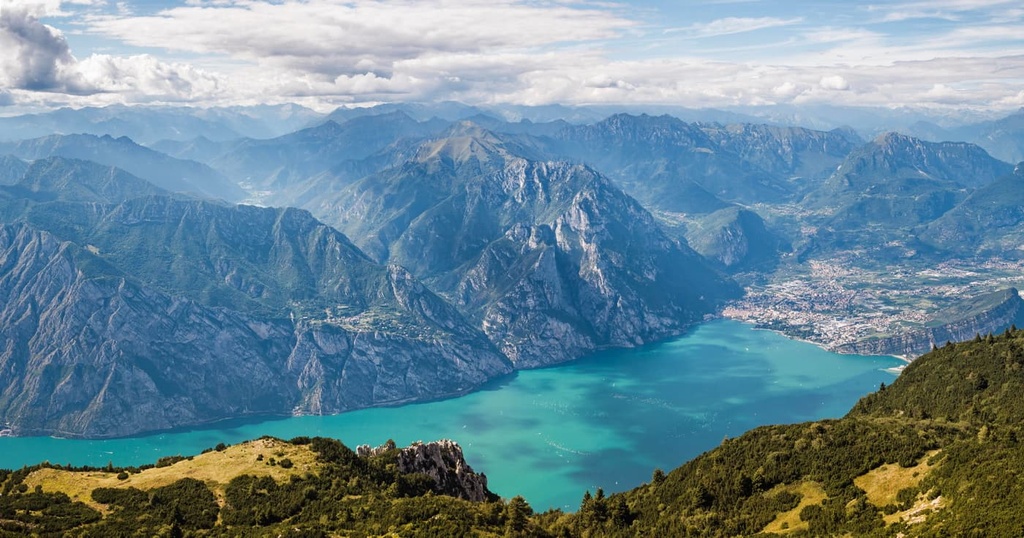
The Ligurian Apennines are two to three hours south of Milan. Unlike the Alps, these are relatively low-elevation mountains, making them more accessible for hiking. There are no glaciers to contend with, nor is there a lasting snowpack after the spring. The trip from Milan to the Apennines is much less popular than the Alps, so you'll find fewer tourists in these mountains.
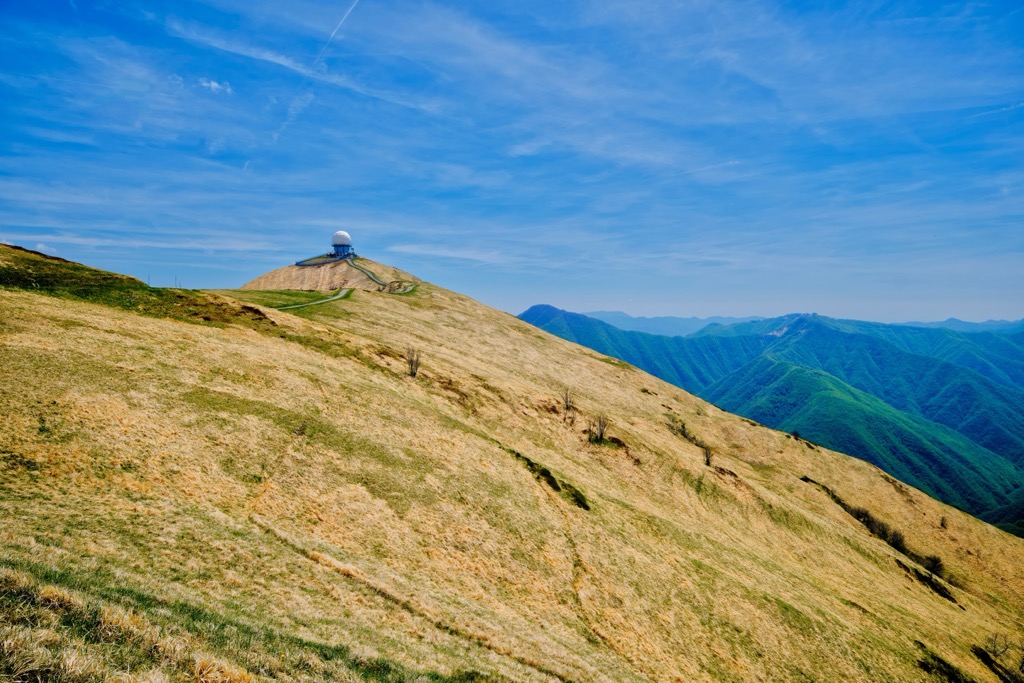
In winter, there are many ski resorts in the mountains of Milan. Here is a breakdown of the main areas:
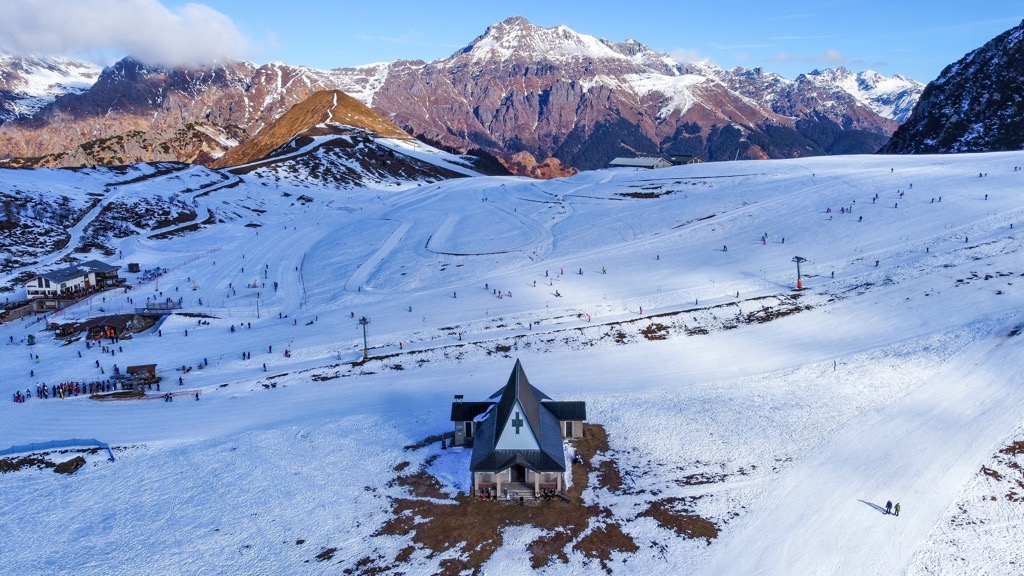
Check the Lombardy, Piedmont, Aosta Valley, Trentino, and Emilia-Romagna ski resort maps, as well as the larger Italy ski resorts map in the World Mountain Lifts section of the site. It includes information about open ski lifts/slopes near Milan in real-time, with opening dates and hours. There are also year-round cable cars, funiculars, cog railways, aerial tramways, and all other types of mountain lifts.
During your stay in Milan, visit the official tourist center for more information - don’t worry, they speak English if your Italian is feeling a bit rusty.
Milan Tourist Information
Piazza Duomo 14 or Via dei Mercanti, 8, 20121, Milano (MI), Lombardy, Italy
On weekdays from 10 am to 6 pm, on weekends from 1:30 to 6 pm
+39028515593
info@yesmilano.it, infotourist@comune.milano.it
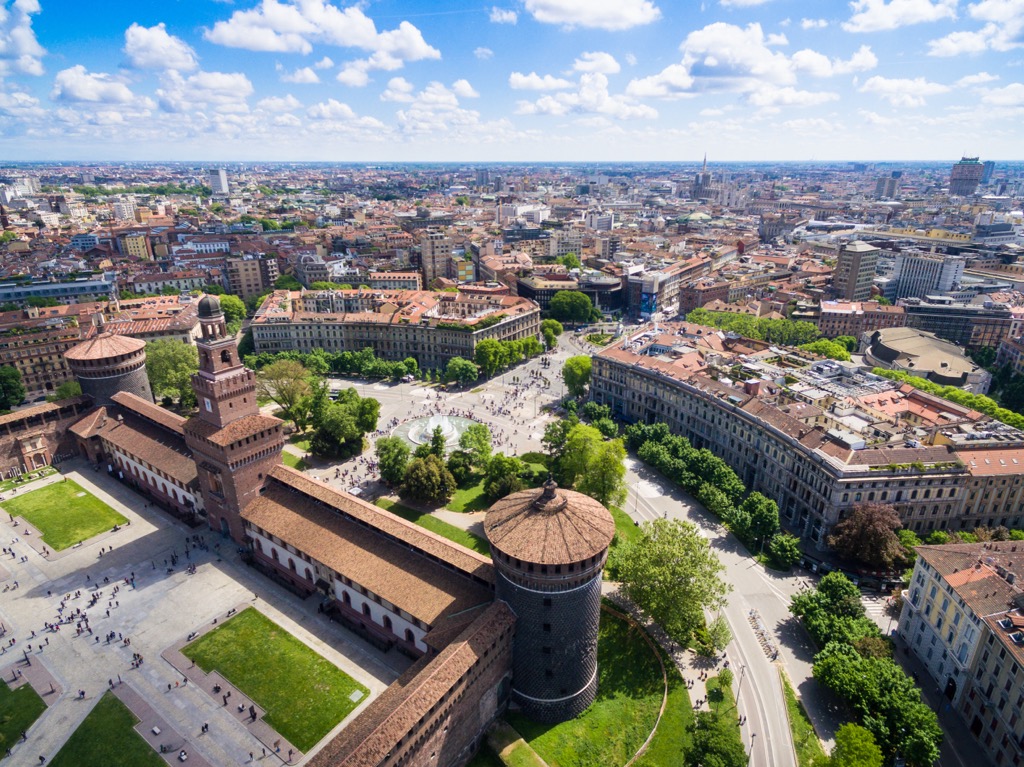
The main option for an overnight stay for hiking in the mountains of Milan is the mountain hut. The Lombardy region has many, sometimes two or three on the same peak. Do your research beforehand so that your expectations match the reality. For example, not all huts have hot showers, and many are closed for the winter. On the plus side, they are wildly affordable compared to lodging in a hotel or condo.
Around Mount Resegone, you will find five huts: Rifugio Stoppani, Rifugio Marchett, Capanna Sociale Giacomo Ghislandi, Capanna Alpinisti Monzesi on the Lecco side, Rifugio Luigi Azzoni on top, and the eponymous Rifugio Resegone on the back side in the Imagna Valley.
On Grigna, you will find Rifugio Luigi Brioschi, Rifugio Bietti-Buzzi, Rifugio Bogani, Rifugio Pialeral, and Rifugio Rosalba on the namesake neighboring Punta Rosalba (2,808 m / 9,212 ft). Both mountains are also “dotted” with agriturismos (farm stays), where you can rent a private room. The farms are usually in the valleys at a lower altitude.
For those looking to stay in the city, you have all the usual options: hotels, Airbnb, hostels, etc. Expect to pay fairly high prices. Central Milan is one of the most expensive places in Italy.
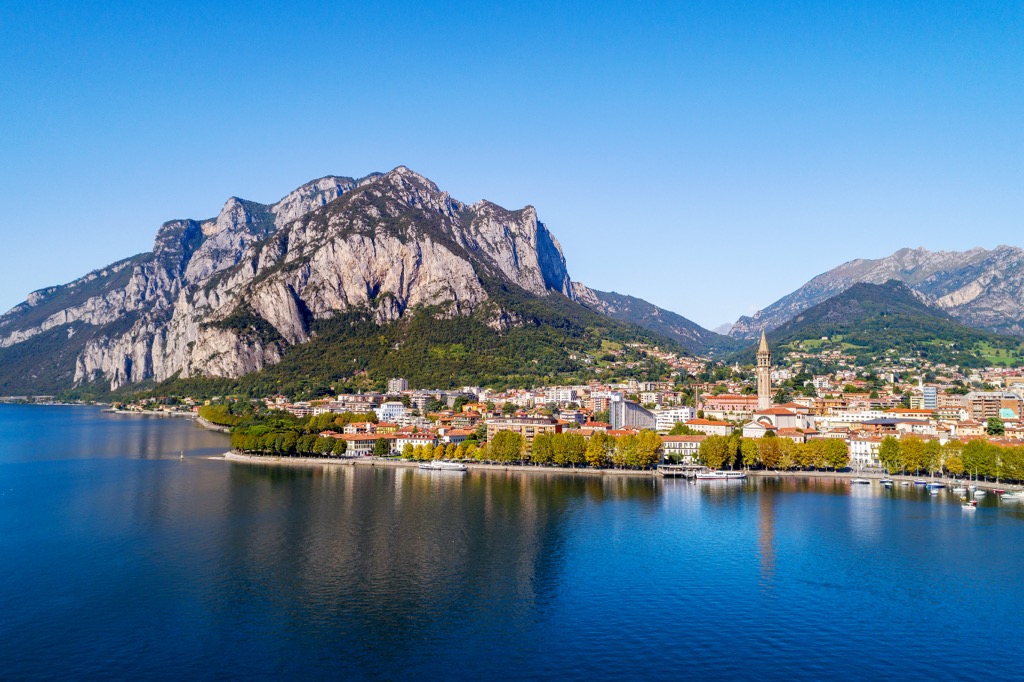
Explore Milan with the PeakVisor 3D Map and identify its summits.

